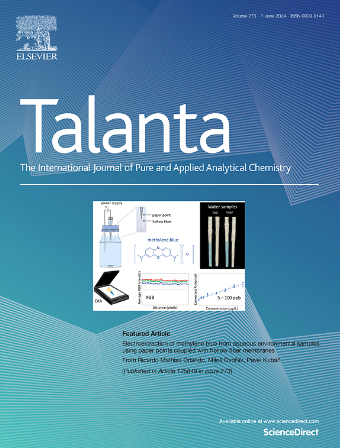Advances in fluorescent probes of non-alcoholic fatty liver disease
IF 5.6
1区 化学
Q1 CHEMISTRY, ANALYTICAL
引用次数: 0
Abstract
Non-alcoholic fatty liver disease (NAFLD) is the predominant chronic liver disease worldwide, with 20–30 % of individuals going on to develop non-alcoholic steatohepatitis (NASH), which could result in serious complications such as fibrosis, liver cirrhosis, and hepatocellular carcinoma. Since NAFLD is reversible in its early stages, early diagnosis is necessary. By using particular structural and functional designs, fluorescent probes can be made to detect NAFLD-related chemicals or biological processes with a high degree of sensitivity and selectivity. In this work, we summarize the existing fluorescent probes for identifying biomarkers in NAFLD, including microenvironment (viscosity, polarity), ROS, RNS, RSS, metal ions, enzymes, and RNA. Furthermore, future directions are envisioned to inform the creation of more accurate and reliable fluorescent probes for NAFLD diagnosis, emphasizing the benefits and challenges of fluorescence probes.

求助全文
约1分钟内获得全文
求助全文
来源期刊

Talanta
化学-分析化学
CiteScore
12.30
自引率
4.90%
发文量
861
审稿时长
29 days
期刊介绍:
Talanta provides a forum for the publication of original research papers, short communications, and critical reviews in all branches of pure and applied analytical chemistry. Papers are evaluated based on established guidelines, including the fundamental nature of the study, scientific novelty, substantial improvement or advantage over existing technology or methods, and demonstrated analytical applicability. Original research papers on fundamental studies, and on novel sensor and instrumentation developments, are encouraged. Novel or improved applications in areas such as clinical and biological chemistry, environmental analysis, geochemistry, materials science and engineering, and analytical platforms for omics development are welcome.
Analytical performance of methods should be determined, including interference and matrix effects, and methods should be validated by comparison with a standard method, or analysis of a certified reference material. Simple spiking recoveries may not be sufficient. The developed method should especially comprise information on selectivity, sensitivity, detection limits, accuracy, and reliability. However, applying official validation or robustness studies to a routine method or technique does not necessarily constitute novelty. Proper statistical treatment of the data should be provided. Relevant literature should be cited, including related publications by the authors, and authors should discuss how their proposed methodology compares with previously reported methods.
 求助内容:
求助内容: 应助结果提醒方式:
应助结果提醒方式:


